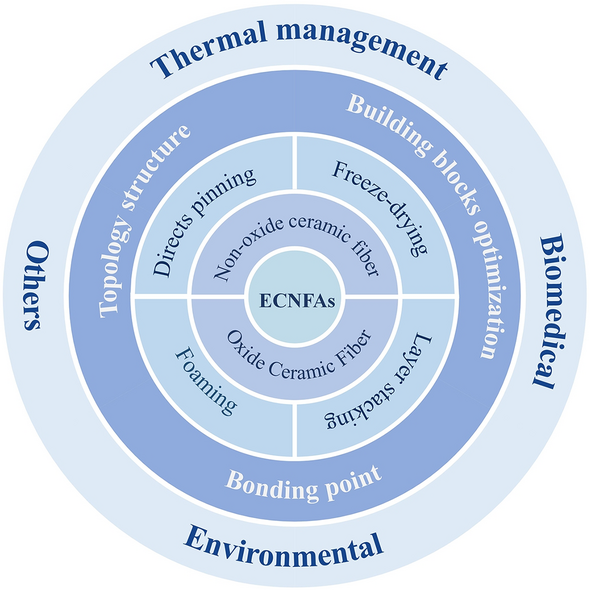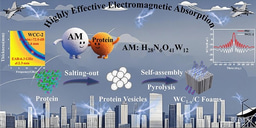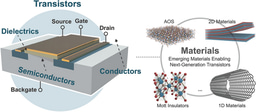Electrospun Nanofiber‑Based Ceramic Aerogels: Synergistic Strategies for Design and Functionalization

As global demand for advanced materials in extreme environments grows, traditional ceramic aerogels face critical limitations due to their brittleness and poor mechanical resilience. Now, researchers from Donghua University, led by Professor Yang Si, have published a comprehensive review on electrospun ceramic nanofibrous aerogels (ECNFAs), offering a transformative approach to designing lightweight, flexible, and multifunctional ceramic frameworks. This work provides a roadmap for next-generation aerogel technologies that overcome longstanding mechanical and functional constraints.
Why ECNFAs Matter
- Mechanical Resilience: ECNFAs constructed from 1D ceramic nanofibers exhibit exceptional elasticity, compressibility, and tensile strength—far surpassing conventional ceramic aerogels.
- Multifunctionality: Their hierarchical porosity, high surface area, and tunable composition enable applications in thermal insulation, environmental remediation, biomedicine, and beyond.
- Scalability: Compatible with electrospinning and 3D assembly techniques, ECNFAs offer a scalable path for integrating ceramic performance into real-world systems.
Innovative Design and Features
- Fabrication Methods: The review details four key strategies—freeze-drying, layer-by-layer stacking, foaming, and direct spinning—for constructing 3D ECNFAs from electrospun ceramic nanofibers.
- Structural Optimization: Multi-scale design strategies are introduced, including building block toughening (e.g., phase engineering, doping), bonding point reinforcement (e.g., covalent junctions), and architectural customization (e.g., cellular, lamellar, Bouligand structures).
- Material Systems: Covers a wide range of oxide and non-oxide ceramic systems (e.g., SiO2, ZrO2, SiC, BN) and their composite formulations, enabling tailored properties for specific applications.
Applications and Future Outlook
- Thermal Management: ECNFAs achieve ultralow thermal conductivity (as low as 0.021 W/m·K) and high-temperature stability (>1600 °C), making them ideal for aerospace and energy insulation.
- Environmental Engineering: Demonstrated utility in air purification (microbial inactivation, VOC degradation), water treatment (oil–water separation, solar desalination), noise control, and electromagnetic wave absorption.
- Biomedical Uses: ECM-mimetic scaffolds support bone regeneration, soft tissue repair, and drug delivery with controlled release and biodegradability.
- Challenges and Opportunities: The review highlights the need for broader material exploration, scalable manufacturing, and deeper theoretical understanding of structure–property relationships to unlock ECNFAs’ full potential.
This comprehensive review establishes ECNFAs as a revolutionary class of ceramic materials, bridging the gap between structural performance and functional versatility. Stay tuned for more cutting-edge developments from Professor Yang Si and the team at Donghua University!
Follow the Topic
-
Nano-Micro Letters

Nano-Micro Letters is a peer-reviewed, international, interdisciplinary and open-access journal that focus on science, experiments, engineering, technologies and applications of nano- or microscale structure and system in physics, chemistry, biology, material science, and pharmacy.






Please sign in or register for FREE
If you are a registered user on Research Communities by Springer Nature, please sign in